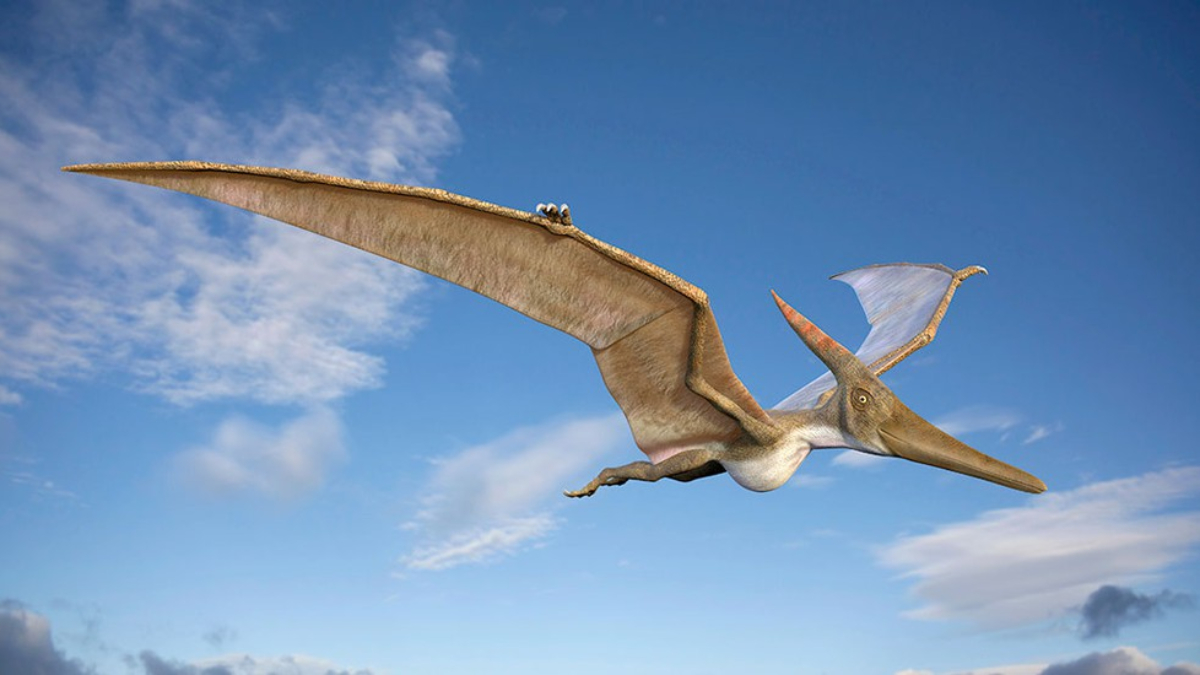Discovery of Haliskia peterseni
A formidable pterosaur, with bony crests on its upper and lower jaws and spike-shaped teeth for snaring marine prey, once flew over the shallow Eromanga Sea, now arid inland Australia. Scientists in Queensland announced the discovery of fossils belonging to this creature, named Haliskia peterseni, which lived alongside dinosaurs and marine reptiles during the Cretaceous Period. These remains represent the most complete pterosaur ever unearthed in Australia.
Characteristics and Significance
Haliskia, with a wingspan of 15 feet (4.6 meters) and an existence dating back about 100 million years, exceeded the closely related Australian pterosaur Ferrodraco in both size and age. The name “sea phantom,” derived from Haliskia, suggests the awe-inspiring spectacle it presented while soaring above the waves.
🇦🇺 NEW 100 MILLION-YEAR-OLD FLYING REPTILE DISCOVERED IN AUSTRALIA
Researchers in Queensland have discovered a new species of Pterosaur, named Haliskia, dating back 100 million years.
---Advertisement---The Haliskia, with a wingspan of 4.6 meters, thrived during a time when the area was a vast… pic.twitter.com/KEISNxs9zh
— Mario Nawfal (@MarioNawfal) June 13, 2024
Insights from the Discoveries
Adele Pentland, lead author of the study, highlighted the significance of the findings, noting that the fossils provide evidence of the ancient Eromanga Sea and shed light on Australia’s prehistoric past. Despite challenges in fossil preservation, researchers uncovered 22% of Haliskia’s skeleton, including crucial anatomical features like complete lower jaws, throat bones, teeth, vertebrae, ribs, and limb bones.
Unique Adaptations
Pentland discussed Haliskia’s unique adaptation, suggesting the presence of a muscular tongue inferred from the relative length of its throat bones compared to the lower jaw. This adaptation, with throat bones constituting 70% of the lower jaw length, likely provided Haliskia with an advantage in trapping live prey like fish and squid-like cephalopods.
Comparative Analysis
Haliskia’s remains outshine those of Ferrodraco in completeness, both belonging to the pterosaur group known as anhanguerians. This group, identified globally, underscores the diverse distribution of pterosaurs during the Cretaceous Period, with Australia contributing significantly to their fossil record.
Also Read: US Anticipates PM Modi-Joe Biden Meet At G7 Summit In Italy
Fossilization and Tribute
After death, Haliskia’s body was buried under sediment at the bottom of the Eromanga Sea, facilitating its fossilization. The creature’s name honors Kevin Petersen, an avocado farmer turned museum curator, who discovered its remains in 2021, further highlighting the collaborative efforts in paleontological research.
Extinction and Ecological Roles
Pterosaurs, the earliest vertebrates to achieve powered flight, emerged around 230 million years ago, preceding birds and bats. However, they faced extinction alongside dinosaurs 66 million years ago, following an asteroid strike. Pentland emphasized the diverse ecological roles of pterosaurs, with some feeding on insects, others on fish, and some scavenging, illustrating their adaptive radiation during the Mesozoic Era.
Also Read: Elon Musk’s Decision Is Beyond Ridiculous’: Donald Trump’s Niece Blasts X Owner













